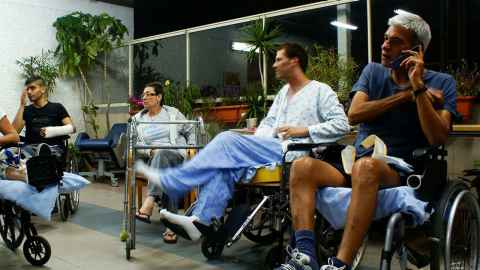'Unnatural causes: Is inequality making us sick?' Online resources
19 March 2020
Opinion: Fifth year medical student Emily Yi analyses an American online video database about inequity in health, and how it applies to our own health system in Aotearoa.

In 2008, the television network Public Broadcasting Services (PBS) released a four hour documentary series called “Unnatural Causes: Is Inequality Making Us Sick?” that examined the social determinants of health and subsequent health inequities in the United States. From this, there is an online resource that has small video clips of the series itself and other web resources that supplement it.
On the website, the series is split into each hour. Unfortunately, there is no free public access to the entire documentary. However, the website functions well as a hub of excellent and diverse resources. The first-hour section focuses on presenting the basic framework and information on understanding the link between social determinants of health and health inequities. It includes Michael Marmot’s studies, which found a correlation between health status and wealth, where the poor have the lowest health status and the wealthy have the highest.
The subsequent three-hour sections focus on individual stories. These range from the Pima people, a group of Native Americans living in Arizona, to Gwai Boonkeut, a Laotian immigrant in his 40s. Each section focuses on how a social determinant of health leads to health inequities. In the case of the Pima people, access to water is linked to high rates of adult-onset diabetes. For each section, there are transcripts and additional videos or web links.
The website itself was fairly straight forward to navigate and the small video clips are tasters for the range of public health and epidemiological information the series provides. My highlight was Kim Anderson’s story. Kim was a well-educated African-American woman and lawyer. She had her baby two and a half months early. This section focused on the link between maternal level of education and pregnancy health outcomes. Kim’s baby, Danielle, weighed just over 3 pounds, with a high risk of dying in the first few months. The series stated that “education predicts infant mortality for both white American women and African American women”. Yet, the babies of African-American mothers were at greater risk of infant mortality, which was disproportionate from their mother’s education.
This personal story illustrated a wide disparity between health outcomes. Genetics was called into play. Was there something in the deoxyribonucleic acid (DNA) of African American women that tends towards premature births that is beyond education level, perinatal care, and lifestyle?
To answer the question – a study was created that was based on the idea of a “prematurity gene”. “African Born Blacks, US-born whites, US-born blacks” were compared. African immigrants and white women born in the US had similar outcomes. So, any genetic predisposition was found to not correlate with infant prematurity. This study concluded that it only took one generation of African migration to the US to have a higher risk of premature babies and poorer birth outcomes. The story then suggests that the driver of this was based on the effects that had accumulated over the mother’s lifetime.
The socio-economic correction for the differences between the study groups did not make the gap disappear. Instead, it widened as education improved. Lifelong minority status was postulated to be the answer. The two neonatologists in the story began to theorise how ethnic group was linked with birth outcomes. They determined that the answer was the unequal treatment of African Americans in American society. Racism was taking a heavy toll on African-American children even before they had left their mothers’ wombs. This was also known as the “weathering effect”.
Kim’s story was a step-by-step unveiling of how wider social determinants affect health outcomes. These stories reflected the theories that arise from the work of academics, doctors, and most importantly, the people who are part of the studies. The story was able to contextualise the academia in a digestible and personable fashion.
Instead of telling the audience what the hard facts were, we were shown what they look like in person. It put a face to the research, cementing the vast inequities into reality.
In terms of the relevance of this resource for New Zealand medical students, it gives dignified personhood to the concepts we learn throughout medical school. Stressors from a lifetime of racism, immigrant health, and Indigenous rights are not exclusive to the US, and apply directly to our social and cultural context in Aotearoa. As a profession, we are moving forward with a biopsychosocial model of health that is more explicitly linked with the wider determinants. As medical professionals, we must understand these concepts and, more importantly, these stories. Although this website is over ten years old and may not include the most recent research, it shows the basic epidemiological and public health concepts, which can still be translated into today’s practices and beyond.
Emily Yi is a fourth year medical student at Faculty of Medical and Health Sciences and is based at Rotorua Hospital this year. She's passionate about community health and improving health systems, and a student reviewer for the NZMSJ.
This article reflects the opinion of the author and not necessarily the views of the University of Auckland.
Used with permission from the New Zealand Medical Student Journal, Unnatural causes: Is inequality making us sick? Online resources, Issue 29, November 2019.